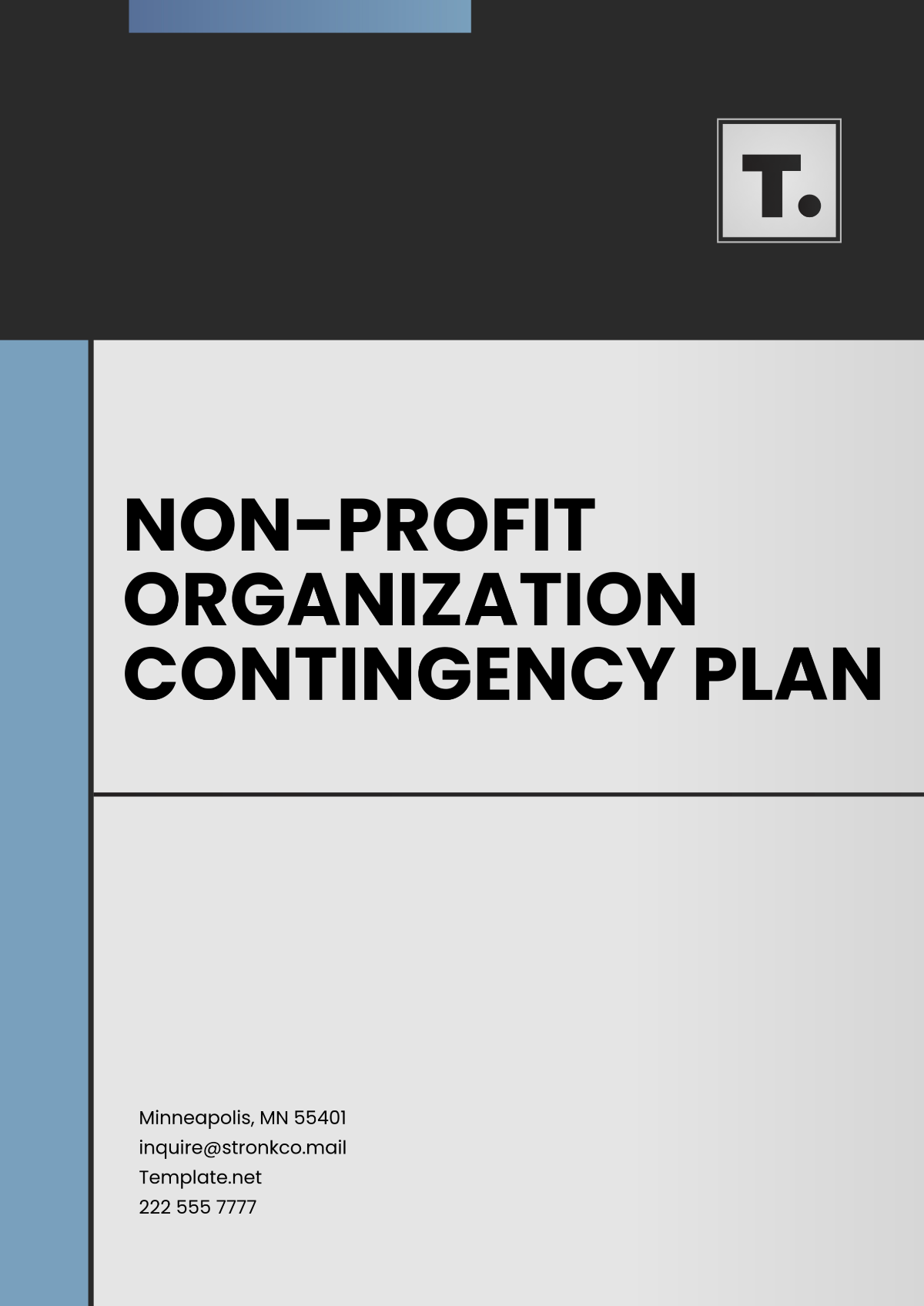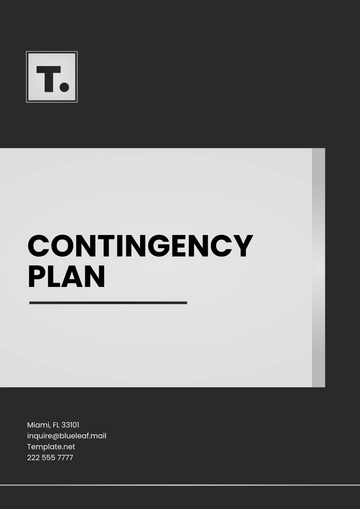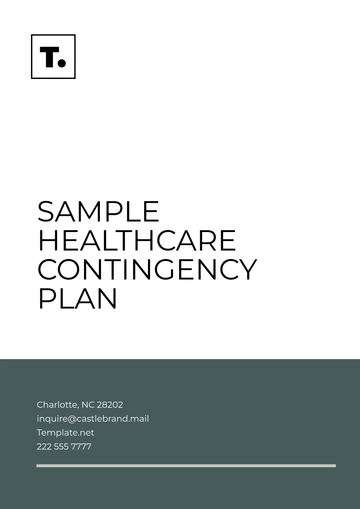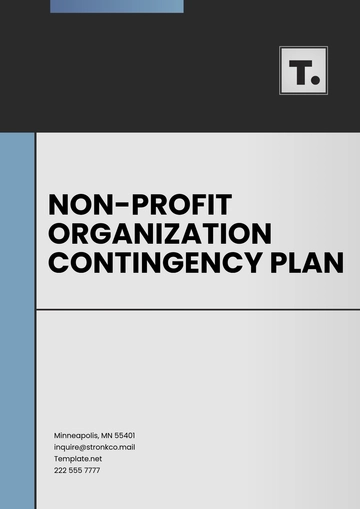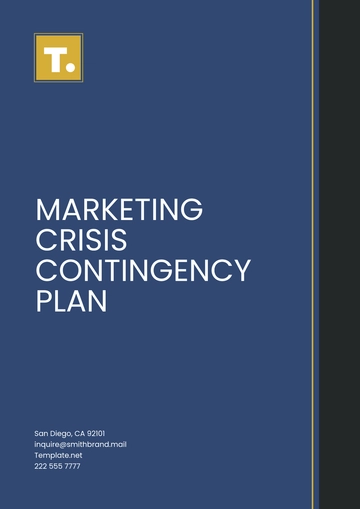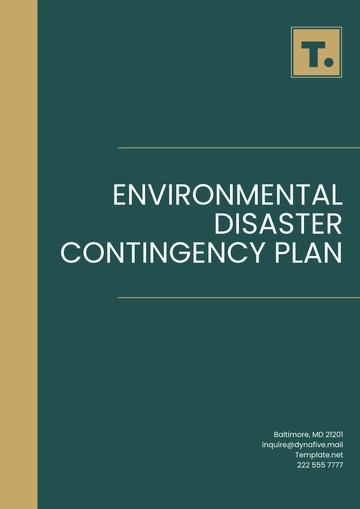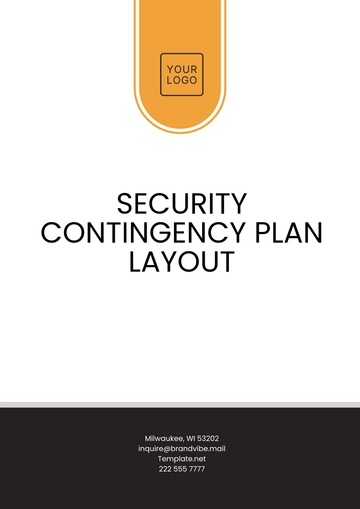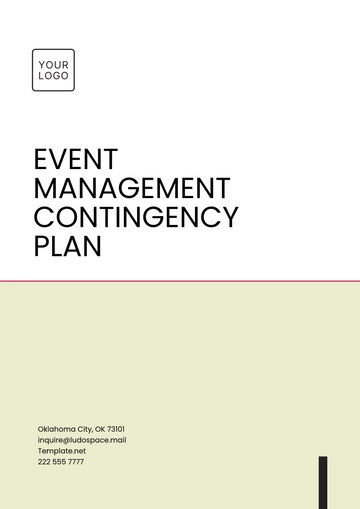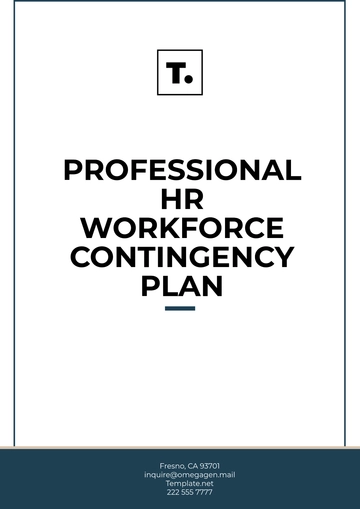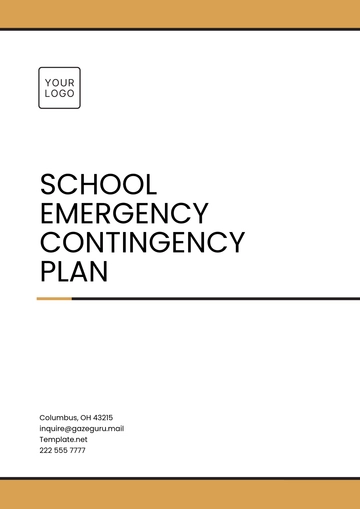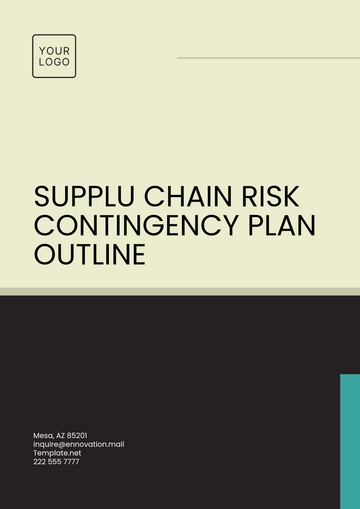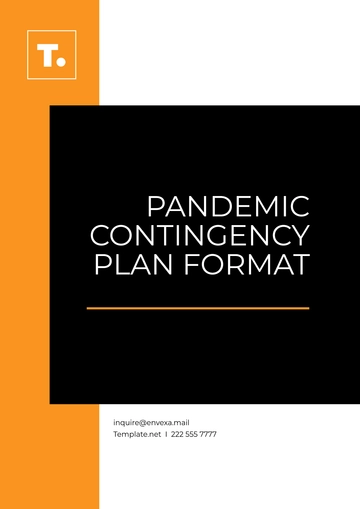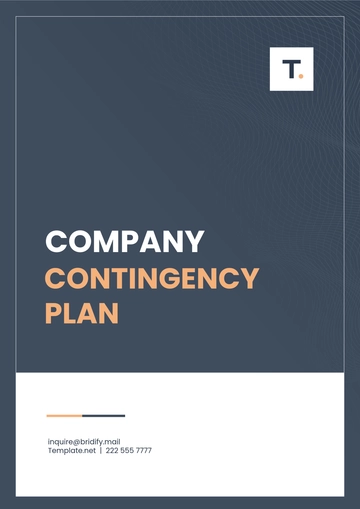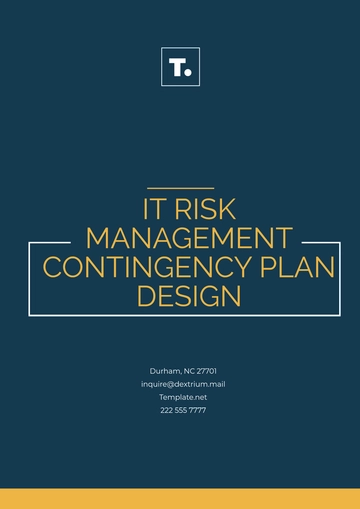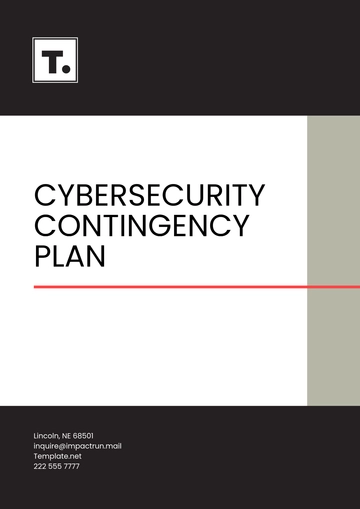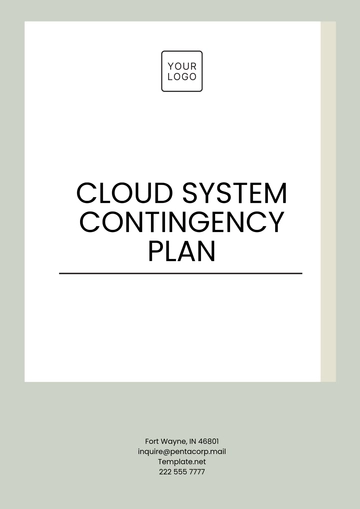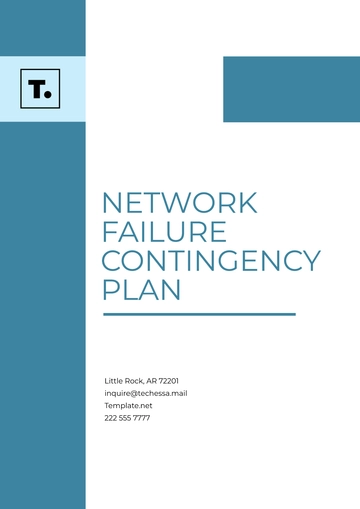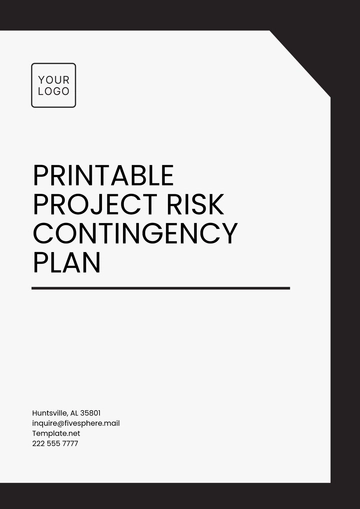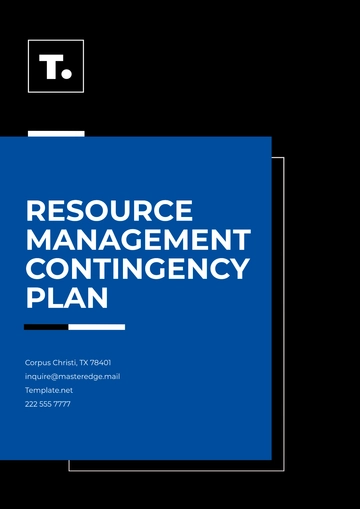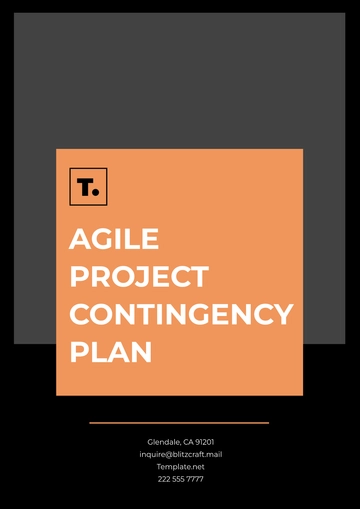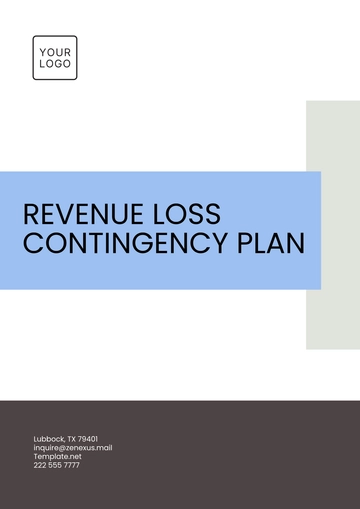Non-Profit Organization Contingency Plan
Prepared By: [Your Name]
Date: February 8, 2060
I. Introduction
The Contingency Plan for our Non-Profit is crafted to ready the organization for possible emergencies and guarantee continuous operations during crises, detailing the steps and resources necessary to handle unexpected incidents disrupting usual activities, covering preparations for natural disasters, financial difficulties, operational interruptions, and other sector-specific risks.
II. Risk Assessment
A thorough risk assessment has been conducted to identify potential threats that could adversely impact the organization. These include:
Natural Disasters: Hurricanes, earthquakes, floods, and fires, may cause significant damage to facilities and property.
III. Emergency Response Procedures
The following steps should be taken immediately in the event of an emergency to ensure the safety of all personnel and the continuity of essential operations:
Activate the emergency team and assign predetermined roles.
Evacuate premises if necessary, following the building's emergency exit procedures.
Contact emergency services and provide detailed information about the situation.
Implement temporary operational measures, such as remote working for staff.
IV. Communication Plan
Effective communication is crucial during a crisis. The guidelines below outline the communication protocols:
A. Internal Communication
B. External Communication
Collaborate closely with media outlets to ensure information shared is accurate and consistent, engaging regularly with journalists, editors, and producers for fact-checking and clarity.
V. Resource Management
A. Staff and Volunteers
B. Financial Resources
VI. Recovery Plan
After the emergency has been resolved, it is crucial to restore normal operations as swiftly as possible. The recovery plan includes:
The process of thoroughly evaluating and analyzing the extent of the damage and determining an ordered list of priorities for the necessary repairs and restoration activities.
Thoroughly evaluate the response's effectiveness, identify areas for improvement, and adjust the contingency plan for better future preparedness.
Debriefing sessions for staff and volunteers allow for collective reflection on experiences, and sharing of learned lessons, and promote mutual understanding, growth, and improved future practices.
VII. Contact Information
Key contacts for crisis management are listed below to ensure swift responses during emergencies:
Name | Role | Email Address |
|---|
Elvie Block | Operations Manager | elvie@you.mail |
Lester Nolan | Head of Communications | lester@you.mail |
Drake Feeney | Emergency Response Coordinator | drake@you.mail |
Plan Templates @ Template.net
